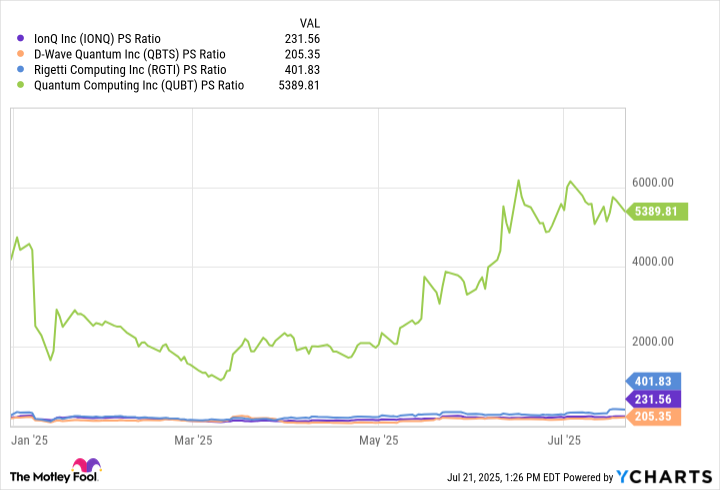“This diversified approach helps cushion the portfolio during market downturns while still allowing participation in upside movements,” he says in an interview.
Edited excerpts from a chat:
Nifty is trading at a premium to historical averages. Are valuations becoming a headwind or is strong earnings growth enough to justify current multiples?
Nifty is currently trading at around 22.5x TTM which is a very minimal premium to historical averages. In fact, Nifty has faced a time and a price correction since the start of the year, which has significantly tamed down valuations and made some stocks relatively cheaper in the largecap space. That said, overall earnings growth hasn’t fully picked up yet. We may still be a few quarters away from seeing strong, broad-based earnings. Until then, the market might stay selective, rewarding only those companies showing clear growth.
The market has been caught in a consolidation range for the last 2 months amid lack of positive triggers. What can make or break the deal for bulls going ahead?
For bulls to take charge again, a few key factors will be critical. An improvement in corporate earnings and supportive global cues such as a potential US rate cut or easing geopolitical tensions could provide the much-needed boost. On the flip side, any disappointment in earnings, high valuations without corresponding growth, or global headwinds like sticky inflation or geopolitical shocks could weigh on this sentiment.
India has seen record SIP inflows and retail participation. Is this depth sustainable in the next correction?
In June 2025, SIP inflows reached a record high of ₹27,269 crore, according to the Association of Mutual Funds in India (AMFI). This represents a 2.2% increase compared to the previous month’s inflow of ₹26,688 crore. The number of contributing SIP accounts also rose, reaching 8.64 crore in June, up from 8.56 crore in May. This growing monthly SIP inflows number highlights the growing maturity of the retail investors as this steady inflow has provided a strong cushion for the markets, especially during phases of global volatility.Many first-time investors have entered the markets post Covid, largely driven by rising financial awareness, better digital access, and strong past returns. While this is encouraging, it also means a large segment of investors has yet to experience a sharp or prolonged market downturn. This could test their resolve, especially if corrections extend beyond a few weeks and start affecting portfolio returns more visibly.
That said, the shift towards disciplined investing through Systematic Investment Plans (SIPs) and the growing popularity of mutual funds indicate that a core segment of investors is here for the long term. Even if we see some dip in the flows during corrections, it is likely to be temporary. The overall trend of rising domestic participation is expected to continue, driven by favorable demographics, under-penetration of financial products, and increasing trust in market-linked instruments. In essence, while some short-term impact is possible, the structural depth looks sustainable.
Are there specific sectors or themes that you believe are positioned for strong growth or present heightened risks in the current environment?
In the current environment, financial services, pharmaceutical and healthcare stand out as sectors positioned for strong growth.
What are the biggest risks domestic investors should be aware of while navigating today’s markets?
In the current market environment, geopolitical risk stands out as one of the biggest concerns for domestic investors. With escalating tensions in the Middle East and the looming August deadline for the implementations of tariffs by President Donald Trump, any flare-up in these areas could create significant volatility, not just globally, but also in Indian markets.
With heightened market volatility, what approaches or strategies do you recommend for investors trying to manage risk and capitalize on market opportunities?
In a volatile market environment, it’s important for investors to strike a balance between managing risk and capturing potential opportunities. One effective strategy is to diversify across asset classes rather than relying solely on equities. Multi-asset funds can be a smart choice in this regard, as they offer exposure to a mix of equities, debt, and gold/silver within a single investment. This diversified approach helps cushion the portfolio during market downturns while still allowing participation in upside movements.
Given the correction in the last few weeks, do you see some opportunities in defence stocks?
Defence stocks have seen a strong rally recently, especially after the Pahalgam attack, as investor interest in the sector picked up. The broader theme remains intact over the long term, driven by increasing indigenization efforts and a clear push to reduce reliance on foreign suppliers for defense equipment. Government initiatives, rising defense budgets, and strong order pipelines for key players add further support to the sector’s outlook. While some profit booking has been observed in the last few days, which is natural after a sharp run-up, the long-term story still looks promising. In the short term, valuations may seem stretched, and some consolidation can’t be ruled out. However, for investors with a longer horizon, defense remains a structural growth theme with potential for steady returns as India continues to build its domestic capabilities.
Expectations from Q1 earnings are low. Which pockets of the market do you think can surprise you?
Broadly, Q1 could be muted on expectations. Capital goods and infra could positively surprise if operating leverage might start to kick-in, banks may do better due to lower credit costs and autos might surprise due to softening raw material prices.









